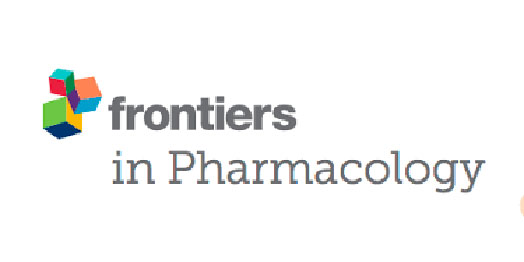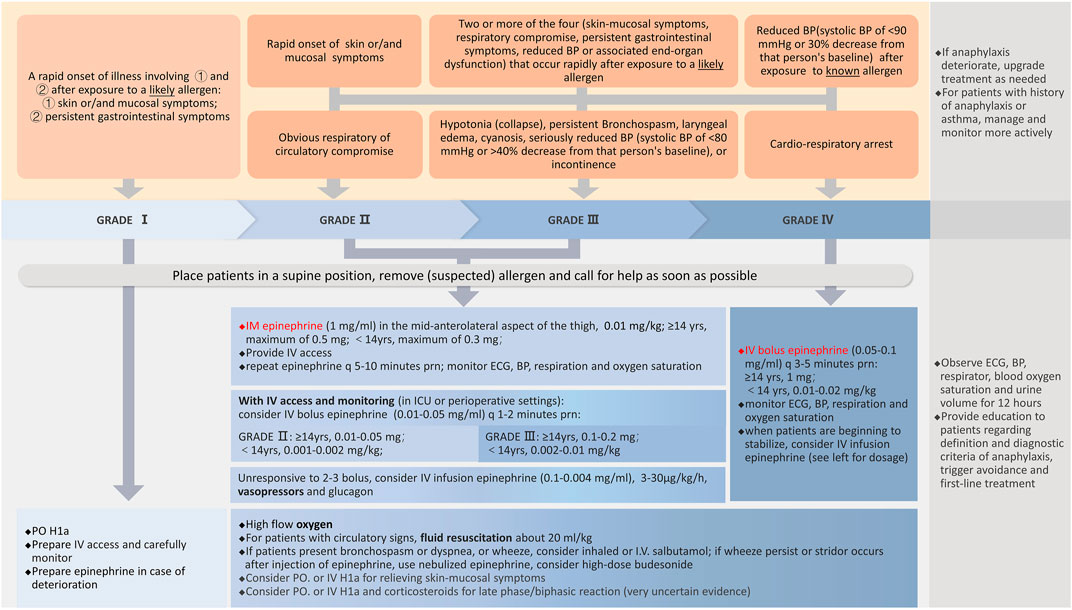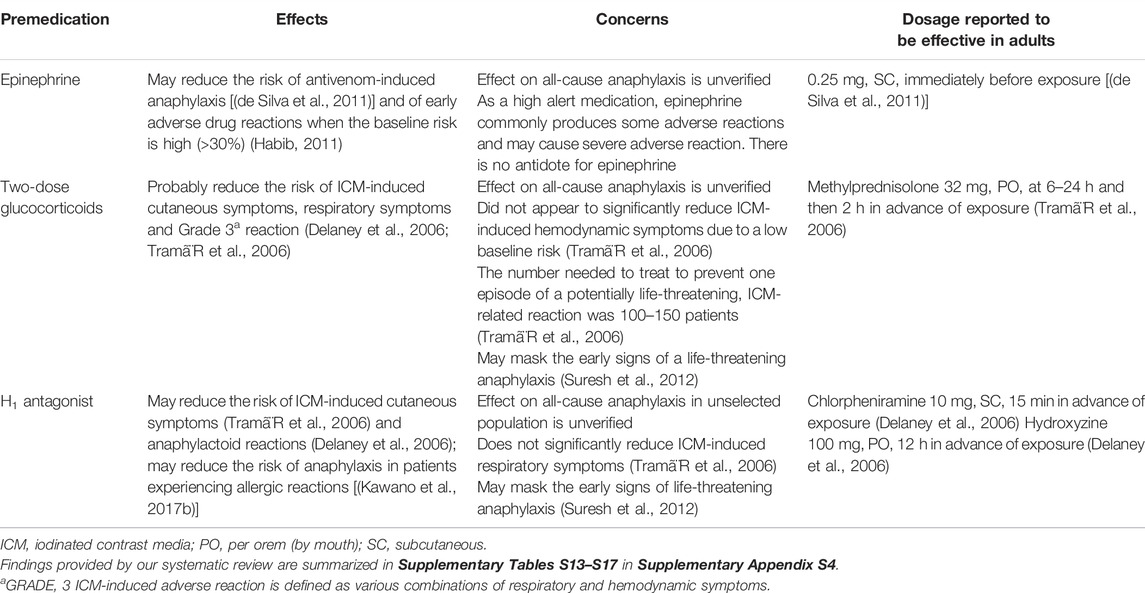Li X, Ma Q, Yin J, Zheng Y, Chen R, Chen Y, Li T, Wang Y, Yang K, Zhang H, Tang Y, Chen Y, Dong H, Gu Q, Guo D, Hu X, Xie L, Li B, Li Y, Lin T, Liu F, Liu Z, Lyu L, Mei Q, Shao J, Xin H, Yang F, Yang H, Yang W, Yao X, Yu C, Zhan S, Zhang G, Wang M, Zhu Z, Zhou B, Gu J, Xian M, Lyu Y, Li Z, Zheng H, Cui C, Deng S, Huang C, Li L, Liu P, Men P, Shao C, Wang S, Ma X, Wang Q, Zhai S.
Front Pharmacol. 2022 Mar 28;13:845689. doi: 10.3389/fphar.2022.845689.
Background: For anaphylaxis, a life-threatening allergic reaction, the incidence rate was presented to have increased from the beginning of the 21st century. Underdiagnosis and undertreatment of anaphylaxis are public health concerns.
Objective: This guideline aimed to provide high-quality and evidence-based recommendations for the emergency management of anaphylaxis.
Method: The panel of health professionals from fifteen medical areas selected twenty-five clinical questions and formulated the recommendations with the supervision of four methodologists. We collected evidence by conducting systematic literature retrieval and using the Grading of Recommendations, Assessment, Development, and Evaluation (GRADE) approach.
Results: This guideline made twenty-five recommendations that covered the diagnosis, preparation, emergency treatment, and post-emergency management of anaphylaxis. We recommended the use of a set of adapted diagnostic criteria from the American National Institute of Allergy and Infectious Diseases and the Food Allergy and Anaphylaxis Network (NIAID/FAAN), and developed a severity grading system that classified anaphylaxis into four grades. We recommended epinephrine as the first-line treatment, with specific doses and routes of administration for different severity of anaphylaxis or different conditions. Proper dosage is critical in the administration of epinephrine, and the monitor is important in the IV administration. Though there was only very low or low-quality evidence supported the use of glucocorticoids and H1 antagonists, we still weakly recommended them as second-line medications. We could not make a well-directed recommendation regarding premedication for preventing anaphylaxis since it is difficult to weigh the concerns and potential effects.
Conclusion: For the emergency management of anaphylaxis we conclude that:
• NIAID/FAAN diagnostic criteria and the four-tier grading system should be used for the diagnosis
• Prompt and proper administration of epinephrine is critical.



No comments:
Post a Comment